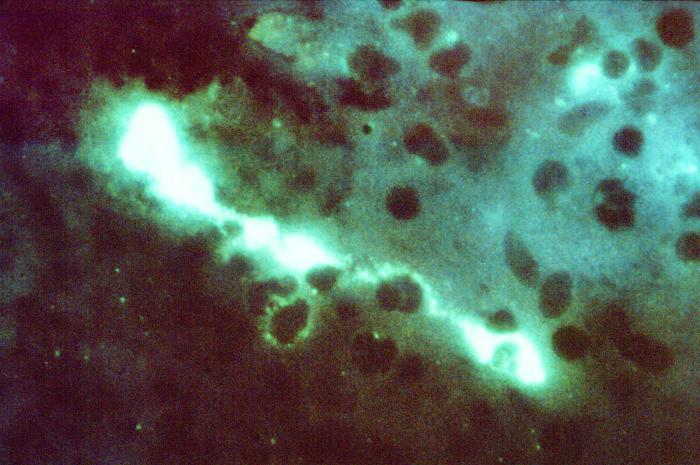Chlamydophila psittaci
| Chlamydophila psittaci | ||||||||||||
|---|---|---|---|---|---|---|---|---|---|---|---|---|
 Direct fluorescent antibody stain of a mouse brain impression smear showing C. psittaci.
| ||||||||||||
| Scientific classification | ||||||||||||
|
|
Psittacosis Microchapters |
|
Diagnosis |
|---|
|
Treatment |
|
Case Studies |
|
Chlamydophila psittaci On the Web |
|
American Roentgen Ray Society Images of Chlamydophila psittaci |
|
Risk calculators and risk factors for Chlamydophila psittaci |
Overview
Psittacosis is caused by the organism Chlamydia psittaci. Chlamydia is understood to be a Gram-negative bacterium belonging to the genus Chlamydia or Chlamydophila in the family of Chlamydiaceae together with Parachlamydiaceae, Waddliaceae and Simkaniaceae in the order Chlamydiales, class and phylum Chlamydiae. Chlamydiales are obligate intracellular infectious agents in eukaryotic cells characterized by a unique developmental replication cycle.
Causes
At least 460 species from 30 bird orders have been identified to be associated with the development of psittacosis. Bird handlers and those who keep birds as pets have a higher prevalence of the disease.
- Turkeys
- Pheasants
- Chickens,
- Ostriches and penguins.
- Migratory birds such as geese, may carry this pathogen.[1]
- Mule ducks have also been associated with human disease through heavy shedding.
Most humans are infected from birds of the order psittaciformes, which includes budgerigars, cockatiels, cockatoos, and parrots. Although the ducks are asymptomatic, each bird order tends to be infected by a predominant genotype of C. psittaci.
References
- ↑ Dickx V, Kalmar ID, Tavernier P, Vanrompay D (2013). "Prevalence and genotype distribution of Chlamydia psittaci in feral Canada geese (Branta canadensis) in Belgium". Vector Borne Zoonotic Dis. 13 (6): 382–4. doi:10.1089/vbz.2012.1131. PMID 23654298.